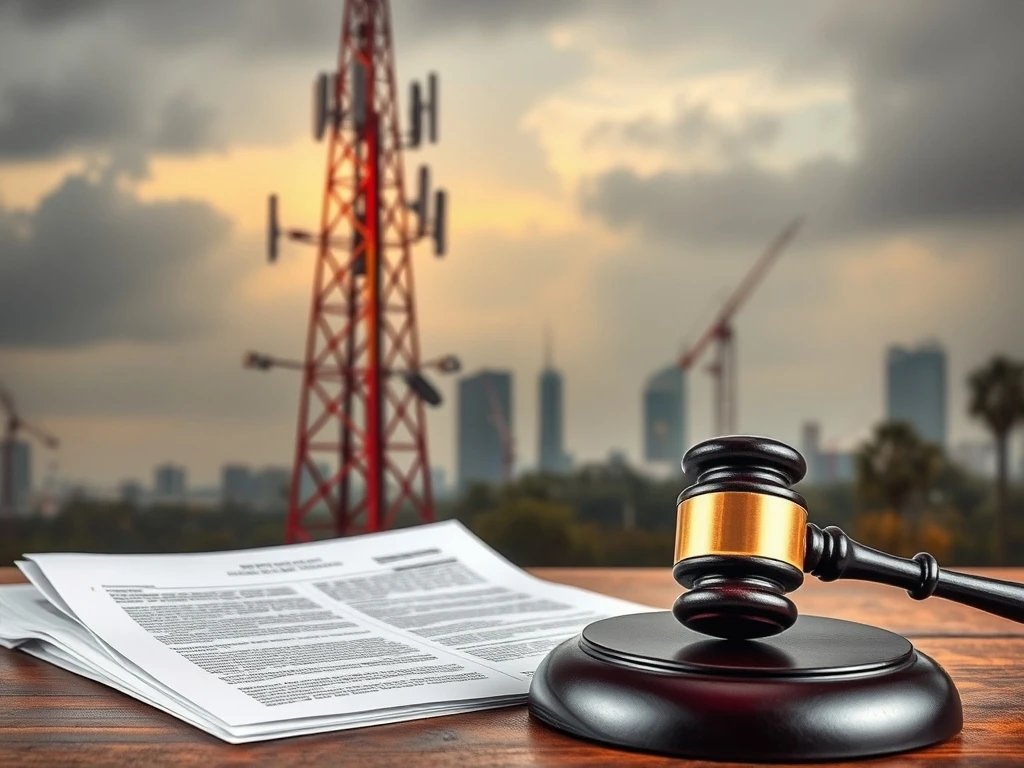The telecommunications sector faces a significant challenge. A prominent firm, ConnectTel Corp., recently filed for Chapter 11 bankruptcy. This **telecom bankruptcy** signals a critical period for the company and the broader industry. This move often stems from complex financial pressures and evolving market dynamics. Therefore, understanding the implications of such a filing is crucial for customers, employees, and investors alike. Furthermore, this event prompts a closer look at the health of the entire telecommunications landscape.
Understanding Telecom Bankruptcy and Chapter 11
When a telecommunications company files for Chapter 11 bankruptcy, it initiates a legal process. This process allows the business to reorganize its finances while continuing operations. Importantly, Chapter 11 is not a liquidation. Instead, it offers a path for the company to develop a plan to repay its debts over time. This plan must gain approval from the bankruptcy court and its creditors. Therefore, the goal is typically to emerge as a healthier, more viable entity. For a telecom firm, this often involves significant debt restructuring and operational adjustments.
The telecommunications industry requires substantial capital investment. Companies must continuously upgrade infrastructure and adopt new technologies. Consequently, high operational costs and competitive pressures can quickly accumulate debt. A **telecom bankruptcy** filing can provide a necessary pause. It shields the company from immediate creditor actions. This protection allows management to focus on long-term stability rather than short-term demands. Ultimately, the process aims to preserve jobs and maintain essential services.
Factors Leading to This Telecom Bankruptcy
Several factors often contribute to a **telecom bankruptcy**. Market shifts represent a primary challenge. Legacy services, like traditional landlines, are declining. Meanwhile, competition from newer technologies, such as 5G and fiber optic networks, intensifies. This rapid technological evolution demands constant investment. Furthermore, maintaining older infrastructure while building new networks becomes a costly endeavor. Companies must adapt quickly to these changes or risk falling behind.
A significant debt burden also plays a critical role. Telecommunications firms often incur massive debts for:
- Network expansion and upgrades
- Mergers and acquisitions
- Spectrum license purchases
These expenses are necessary for growth but can become unsustainable. Rising interest rates further exacerbate this issue. Economic pressures, including inflation, also increase operational costs. Additionally, regulatory challenges add another layer of complexity. Compliance costs and expensive spectrum auctions can strain financial resources. Ultimately, a combination of these factors can push even large companies toward bankruptcy protection.
Immediate Impact of the Telecom Bankruptcy
The immediate aftermath of a **telecom bankruptcy** filing affects multiple stakeholders. Customers naturally express concern about service continuity. Generally, services continue without interruption during Chapter 11 proceedings. The court aims to protect the company’s ability to generate revenue. However, customers might experience changes in plans, customer support responsiveness, or future service offerings. It is advisable for customers to monitor official announcements from the company and the court.
Employees face significant uncertainty. Job security becomes a primary worry. While Chapter 11 aims to preserve the business, it often involves cost-cutting measures. These measures can include layoffs or reduced benefits. Therefore, employees typically experience a period of heightened anxiety. Investors also face substantial losses. Stock values usually plummet, and shares may be delisted from major exchanges. Bondholders and other creditors may also see their claims reduced or restructured. Consequently, the financial impact reverberates widely.
Broader Industry Repercussions from Telecom Bankruptcy
A major **telecom bankruptcy** can send ripples throughout the entire industry. Competitors closely watch the situation. They may see opportunities to gain market share or acquire distressed assets. This can lead to increased competition or further consolidation within the sector. Furthermore, the event can affect overall investor confidence in telecommunications. Potential investors might become more cautious. This caution could impact funding for other companies’ expansion plans or new ventures.
The supply chain also feels the effects. Equipment suppliers, software vendors, and other partners may face delayed payments or canceled orders. This can create financial strain for smaller businesses relying on the bankrupt company. Innovation within the industry might also slow down. Companies facing financial difficulties often cut research and development budgets. This could hinder the deployment of next-generation technologies. Ultimately, a significant bankruptcy can reshape market dynamics and investment patterns across the telecommunications landscape.
The Path Forward After Telecom Bankruptcy Filing
Following a **telecom bankruptcy** filing, the company enters a complex legal and financial restructuring process. Management, under court supervision, works to develop a reorganization plan. This plan outlines how the company will repay its debts. It often involves negotiating with creditors for reduced debt amounts or extended payment terms. Asset sales may also occur to generate necessary funds. The company might sell non-core businesses or less profitable assets. This helps streamline operations and focus on core strengths.
The bankruptcy court provides strict oversight throughout this period. The court ensures the company operates transparently and in good faith. Creditors and other stakeholders have opportunities to voice their concerns. The ultimate goal is for the company to emerge from bankruptcy as a financially stable entity. However, not all Chapter 11 filings succeed. Some companies may eventually transition to Chapter 7 liquidation if reorganization proves impossible. This is why the process is closely watched by all parties involved.
This **telecom bankruptcy** highlights the intense pressures within the telecommunications industry. While challenging, Chapter 11 offers a framework for companies to address deep-seated financial issues. The coming months will reveal the specific trajectory for ConnectTel Corp. Its ability to successfully reorganize will have lasting implications. This situation also serves as a reminder for other firms to proactively manage debt and adapt to market shifts. The telecommunications sector continues its rapid evolution, demanding resilience and strategic foresight from all its players.
Frequently Asked Questions (FAQs)
Q1: What does Chapter 11 bankruptcy mean for a telecommunications company?
Chapter 11 bankruptcy allows a telecommunications company to reorganize its finances under court protection. It continues operations while developing a plan to repay debts. This differs from Chapter 7, which involves liquidation of assets.
Q2: Will my phone or internet service be interrupted due to this telecom bankruptcy?
Generally, service interruptions are unlikely during Chapter 11. The court allows the company to continue operations to generate revenue. However, customers should monitor official company announcements for any potential changes to services or plans.
Q3: How does a telecom bankruptcy impact employees?
Employees often face uncertainty regarding job security. While Chapter 11 aims to preserve the business, it can lead to layoffs or changes in benefits as part of cost-cutting and restructuring efforts. Employee retention is often a key consideration during reorganization.
Q4: What are the common reasons for a telecommunications firm to file for bankruptcy?
Common reasons include heavy debt burdens from infrastructure investments, intense competition, declining revenue from legacy services, and the high cost of adapting to new technologies like 5G. Economic pressures and regulatory challenges can also contribute.
Q5: How long does the Chapter 11 bankruptcy process typically last for a telecom company?
The duration of a Chapter 11 process varies significantly. It can range from several months to several years. The complexity of the company’s debt, the number of creditors, and the viability of the reorganization plan all influence the timeline.
Q6: What happens to the company’s stock and investors after a telecom bankruptcy filing?
The company’s stock typically loses significant value and may be delisted from stock exchanges. Existing shareholders often face substantial losses, as creditors usually have priority in repayment during a reorganization or liquidation.






